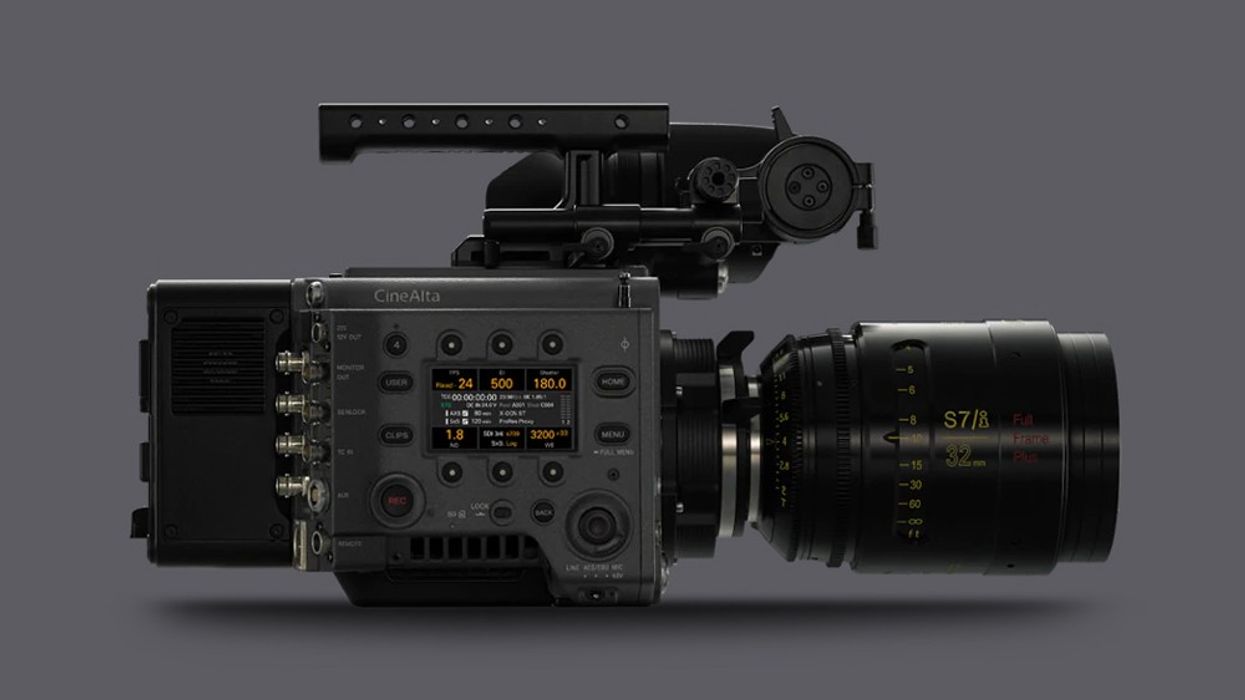3 Things You Didn't Know About Sony VENICE
Sony VENICE is one of the dominant full-frame cinema cameras of today, but despite its fame, there are probably a few things you might not know about it.

Sony VENICE got a lot of attention from filmmakers on its release in the fall of 2017 for a few key features. First and foremost was its full-frame sensor. VENICE was truly part of the first wave of bringing full-frame sensors to professional cinema camera platforms.
VENICE was the culmination of two decades of design work in building complete digital cinema systems, multiple years of massively popular full-frame mirrorless still camera designs, and the full integration of a full-frame sensor into cinema workflows. All of this showed in the smooth workflow integration from capture to final release in a camera body designed to be a pleasure to work with on set. Add on top of that a robust new color science, and VENICE captured a large share of the market quickly.
Between hit shows like the newest season of The Crown, Steve McQueen's Small Axe, and features like Bad Boys for Life and Wine Country, VENICE is everywhere. It provides a compelling choice for filmmakers who want to move to full-frame imagery with its smaller depth of field, better low light reproduction, and different staging while still working with a camera designed for life on set and to deliver files ready for post.
You know the sensor size (36.2 x 24.1 mm), and the lens mount (lever lock E-mount), but there are some things that you probably don't know about the camera that should be on your radar.
Dual Native ISO
Sony VENICE brought dual base ISO to the top end of the full-frame cinema market with VENICE, with a low base ISO of 500 and a high base ISO of 2500. When working at a base ISO, you are going to see less noise than you will once you start turning the ISO up, and you should have its widest latitude. That means you'll have less noise set to 2500 ISO, say, than 2000 ISO.
This is not only a big deal since working in low-light situations requiring higher ISO is becoming more common, it's also a big deal as capturing in more frame rates becomes common. The biggest thing producers tend to forget when shooting high speed, either 120fps for slow-motion or even 120fps for 120p playback, is that shooting those higher frame rates requires more light since the shutter is open a shorter amount of time. With the high base ISO of 2500, it makes it easier for filmmaking teams to capture slow-motion imagery that still looks clean and noise-free.

Sony VENICE was also the first platform to bring smart crop modes to the table. What does this mean?
While competitors focused their crop modes on resolutions that were easy to extract from the sensor, Sony instead focused on the traditional sensor sizes that would be commonly already used by filmmakers. This means that you can shoot in a full-frame mode when working with full-frame lenses, or a Super 35 mode when working with vintage cinema glass. On top of all that, there is even a Super 35 full height anamorphic mode that is set up correctly to get the most from anamorphic lenses that had been designed to cover traditional film formats.
This makes life incredibly flexible for filmmakers in a way that is clearly designed with working DPs in mind. If you already own vintage cinema glass you love, you can keep working with it on the full-frame VENICE even if your lenses don't cover the full sensor. But if you book a job that requires it, you can go rent a set of lenses designed to cover the full image circle. It's not just flexibility, it's options that are designed not around what's easiest to build, but what makes the most sense for users.

Extension System
One of the features that Sony has supported for a while, going back to the HDC-F950, but is frequently forgotten is the extension system. For VENICE, that is specifically the CBK-3610XS Extension System, but even if you don't memorize the catalog number, it should be easy to remember this feature. It allows the image block of the camera to physically separate from the body of the camera. It needs to be connected by a cable that can extend up to 18 feet long which opens up a lot of flexibility.
The most obvious applications for this are if you are working with a gimbal (though you need to be careful with cable routing), a crane, or a car mount. You can put that image block in places where the full VENICE just wouldn't fit, and you can do so faster. But as new capture platforms like VR become more prominent, and as Stereoscopic 3D comes around the track again, the separate imager block will also allow for truly complicated image capture rigs to be built that go far beyond even what the designers from Sony were thinking when they created the system.
Bonus
We had to throw one more fun thing on the list. There is no definite article for "VENICE." Like Concorde, you don't say "the VENICE" you just say "VENICE." Once you get used to it, it's actually kind of fun.
Conclusion
VENICE is now the flagship of a new generation cinema lineup that includes the FX9, FX6, and FX3. All full-frame cameras, designed specifically for moving image makers to be able to craft their images more quickly and easily without sacrifices.
Having proven its imagery on some of the most popular content of our day, it's still full of surprises that should make filmmaking easier. Knowing that, it will let you spend more time focused on being creative and less time worrying about whether or not your camera can support your vision. With Sony VENICE, it will.














